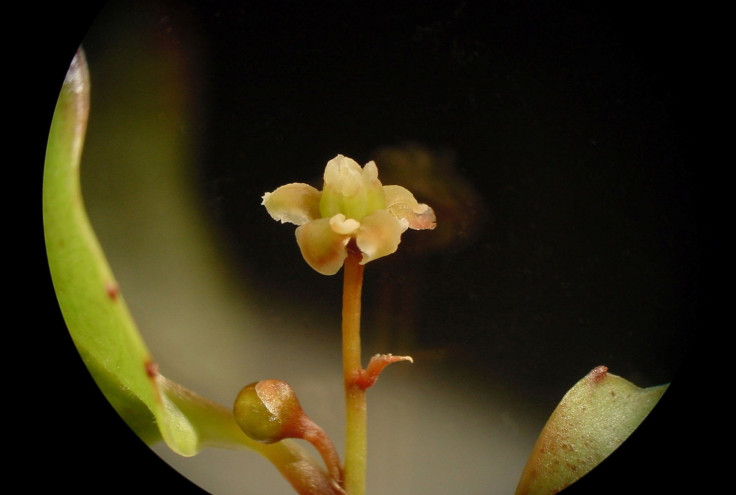DNA Of Oldest Flowering Plant Addresses Darwin’s ‘Abominable Mystery:' Study

A team of researchers have sequenced the genome of the Amborella plant, one of the two oldest lineages of flowering plants, for the first time, potentially addressing Charles Darwin’s “abominable mystery” -- the question of why flowers proliferated on Earth millions of years ago.
The Amborella plant (Amborella trichopoda) is a small understory tree found only on the main island of New Caledonia in the South Pacific, and is considered to be the sole survivor of an ancient evolutionary lineage that traces back to the last common ancestor of all flowering plants. An understory tree is one that grows beneath a forest canopy without rising above it.
The genome sequencing of Amborella -- led by scientists at Penn State University, the University at Buffalo, the University of Florida, the University of Georgia, and the University of California-Riverside -- is expected to provide evidence for the evolutionary processes that paved the way for more than 300,000 flowering plant species that are found on Earth today.
“In the same way that the genome sequence of the platypus -- a survivor of an ancient lineage -- can help us study the evolution of all mammals, the genome sequence of Amborella can help us learn about the evolution of all flowers,” Victor Albert of the University at Buffalo said in a statement.
According to the study, published in Dec. 20 issue of the journal Science, the plant’s DNA provides evidence that the ancestor of all flowering plants, including Amborella, evolved following a "genome doubling event" which occurred about 200 million years ago. While some duplicated genes were lost over time, others took on new functions, including contributions to the development of floral organs.
“Genome doubling may, therefore, offer an explanation to Darwin's ‘abominable mystery’ -- the apparently abrupt proliferation of new species of flowering plants in fossil records dating to the Cretaceous period,” Claude dePamphilis of Penn State University said in the statement.
The researchers believe that Amborella’s genome will shed new light on important traits in all flowering plants, including among all major food crop species, a body of knowledge that could prove useful in developing crop-improvement processes.
As the oldest surviving branch of flowering plants, the Amborella genome allowed researchers to estimate the linear order of genes in an ancestral plant genome called “eudicot,” and to deduce lineage-specific changes that occurred over 120 million years of evolution in the plant.
The research in question is among three different studies related to the Amborella genome that were published in the same issue of the journal Science.
One of the other two reports is about the complete mitochondrial genome sequence of Amborella, which contains large amounts of foreign DNA resulting from horizontal gene transfer. The third report describes a new strategy used to sequence and assemble the Amborella genome, which can be applied to most plants and animals with large, complex genomes.
“Sequencing the genomes of individual Amborella plants across the species’ range reveals geographic structure with conservation implications and evidence of a recent genetic bottleneck,” Pam Soltis of the University of Florida said in a statement. “A similar narrowing of genetic variation occurred when humans migrated from Africa to found modern-day Eurasian populations.”
© Copyright IBTimes 2024. All rights reserved.






















